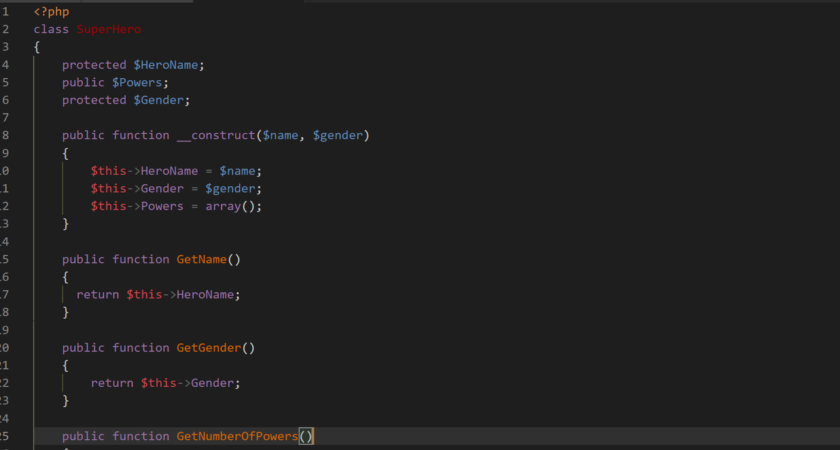For proper code organization and privacy, understanding the concept of visibility in object-oriented programming is essential. PHP has three visibility keywords, each of which plays a different role in controlling access to class members. Let’s explore the specifics.
What Determines Visibility in OOP?
Here, visibility means that class members can be accessed from elsewhere. The visibility modifiers help in implementing encapsulation, which is one of the key principles of OOP. Encapsulation hides the internal details of a class and exposes only what is necessary for the external world to interact with.
The specific keywords used for visibility control may vary between programming languages, but the concepts are generally consistent across OOP languages like Java, C++, Python, and others.
By controlling the visibility of members, you can manage the level of access that external code has to the internal implementation of a class, promoting better code organization, maintenance, and security.
Public vs Private: Unraveling Access Control
Access control is a crucial concept that defines how members (attributes and methods) of a class can be accessed from outside the class. It is usually implemented using keywords such as public, private and protected. These keywords define the visibility and accessibility of class members.
Choosing the appropriate visibility for your code involves strategic decision-making:
- Start Private: Embrace the default privacy of most members to foster encapsulation and safeguard your code from unintended modifications;
- Use Public with Caution: Exercise caution with public access, reserving it for explicit collaboration and inter-class interaction. Mind the security implications and minimize exposure;
- Balance is Key: Strike a harmonious balance between openness and protection. Avoid extremes to cultivate secure, modular, and easily maintainable code.
The regulation of member visibility empowers you to govern external code’s access to a class’s internal implementation. This not only enhances code organization but also simplifies maintenance and fortifies security measures.
python
class MyClass: def __init__(self): # Public member self.public_variable = "I'm public!" # Protected member (convention) self._protected_variable = "I'm protected!" # Private member (name mangling) self.__private_variable = "I'm private!" # Public method def public_method(self): return "This is a public method." # Protected method def _protected_method(self): return "This is a protected method." # Private method def __private_method(self): return "This is a private method." # Create an instance of the class obj = MyClass() # Accessing public members print(obj.public_variable) # Output: I'm public! print(obj.public_method()) # Output: This is a public method. # Accessing protected members (not recommended, just to illustrate) print(obj._protected_variable) # Output: I'm protected! print(obj._protected_method()) # Output: This is a protected method. # Accessing private members (not recommended, just to illustrate) # Note: Name mangling transforms __private_variable into _MyClass__private_variable print(obj._MyClass__private_variable) # Output: I'm private! # Note: Name mangling transforms __private_method into _MyClass__private_method print(obj._MyClass__private_method()) # Output: This is a private method.Remember that these conventions and techniques for access control are not enforced by the language itself but are rather conventions followed by developers to indicate the intended visibility of class members.
Mastering Public Visibility
Achieving proficiency in public visibility within object-oriented programming demands adept class design, strategic management of member access, and steadfast encapsulation of implementation nuances.
In this instance:
- make and model stand as public attributes within the Car class, open for direct external access;
- The display_info method, marked as public, provides a string with car information, accessible both within and outside the class.
By applying these principles, you can master public visibility in your object-oriented designs, creating classes with well-defined and effective public interfaces while encapsulating implementation details to maintain a robust and maintainable codebase.
Navigating Protected Visibility
In object-oriented programming, protected visibility is an access modification that allows access to members within the same class, within subclasses (derived class), and sometimes within the same package or unit, depending on the language. Here are some tips on how to use protected visibility effectively:
While avoiding the potential pitfalls of tight coupling and excessive exposure of implementation details, careful use of protected visibility can reap its benefits for building extensible and maintainable class hierarchies.
Conclusion
In this segment, we’ve uncovered the complexities of PHP OOP visibility keywords. As you understand the importance of public, private, and protected, stay tuned for an in-depth exploration of inheritance and class constants in the chapters ahead.
